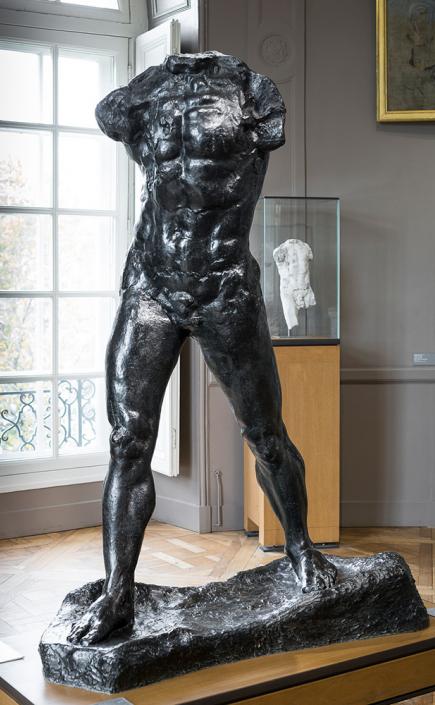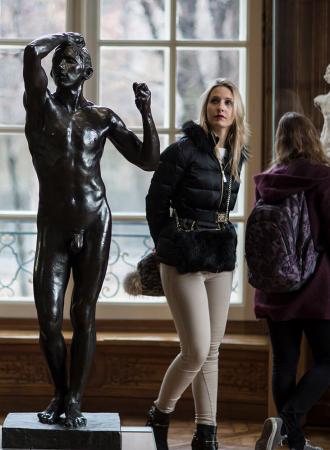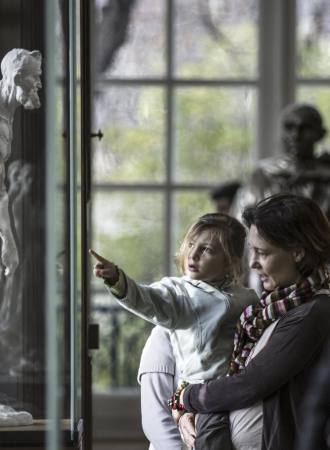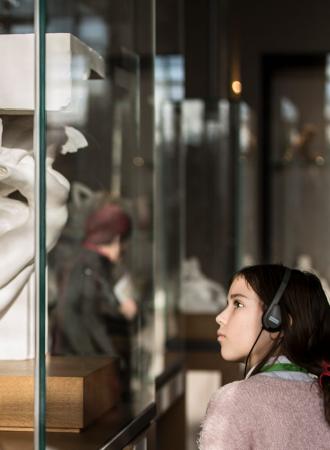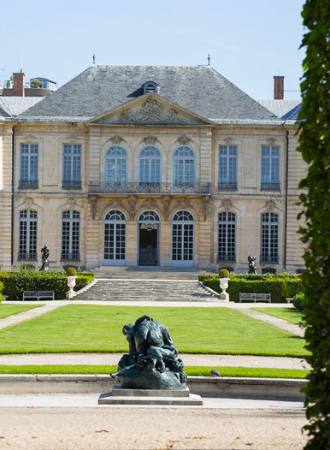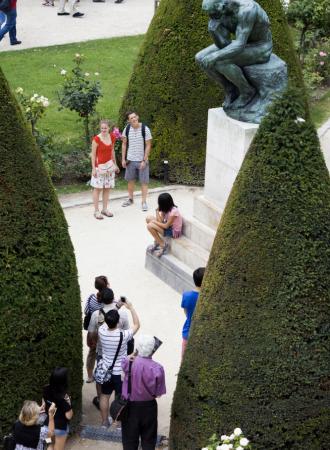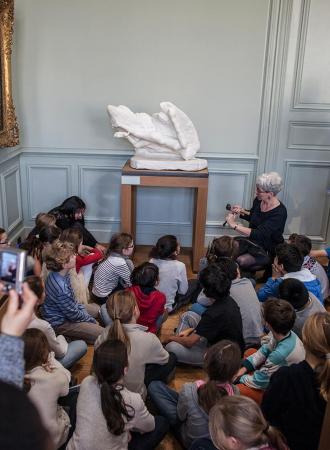Search the site
The Martyr
Auguste Rodin (1840 -1917)
The Martyr was designed as part of The Gates of Hell (66-69). She appeared on the tympanum and the lower left-hand door, where, partially draped, with eyes veiled, she represented Fortune. Removed from this infernal context, she began an independent existence as a work in her own right. The figure was then enlarged, but still hollowed out in the same way on the spine and the back of the head as when attached to the bottom of the door. Reclining, in an ambiguous attitude of suffering and ecstasy, with arms apart and head falling backward, the figure is portrayed in the manner convention had demanded since Antiquity for those who died a violent death. Rodin very probably drew his inspiration here from Stefano Maderno’s celebrated statue of Saint Cecilia (Santa Cecilia in Trastevere, Rome, 1600), but this work may also be compared to Bernini’s Lodovica Albertoni (1674).
The naked body exposed to the public gaze bears no wound. No detail nor element enable the martyr to be identified or recall the circumstances of her agony, which seems more moral or internal than physical. The attitude of complete abandon and the facial expression with closed eyes establishes parallels with that of Bernini’s Ecstasy of Saint Teresa (1647–1652).
The artwork in the museum
Permanent collections – ground floor, Room 7
We cannot guarantee the presence of all our artworks; some may be out on loan.
SEE ALSO
- Sainte Cécile de Stefano Maderno, Rome - © Paul Hermans / CC BY-SA (https://creativecommons.org/licenses/by-sa/3.0)
- Ludovica Albertoni du Bernin, Rome - © ho visto nina volare / CC BY-SA (https://creativecommons.org/licenses/by-sa/2.0)
Discover the themes related to the work
Date of conception :
1885
Dimensions :
H. 14,8 cm ; L. 61 cm ; P. 40,8 cm
Materials :
Plâtre
Inventory number :
S.01484
Credits :
© Photographic Agency of musée Rodin - Jérome Manoukian
Additional information
Iconographie
- The Martyr(zip, 802 ko)
